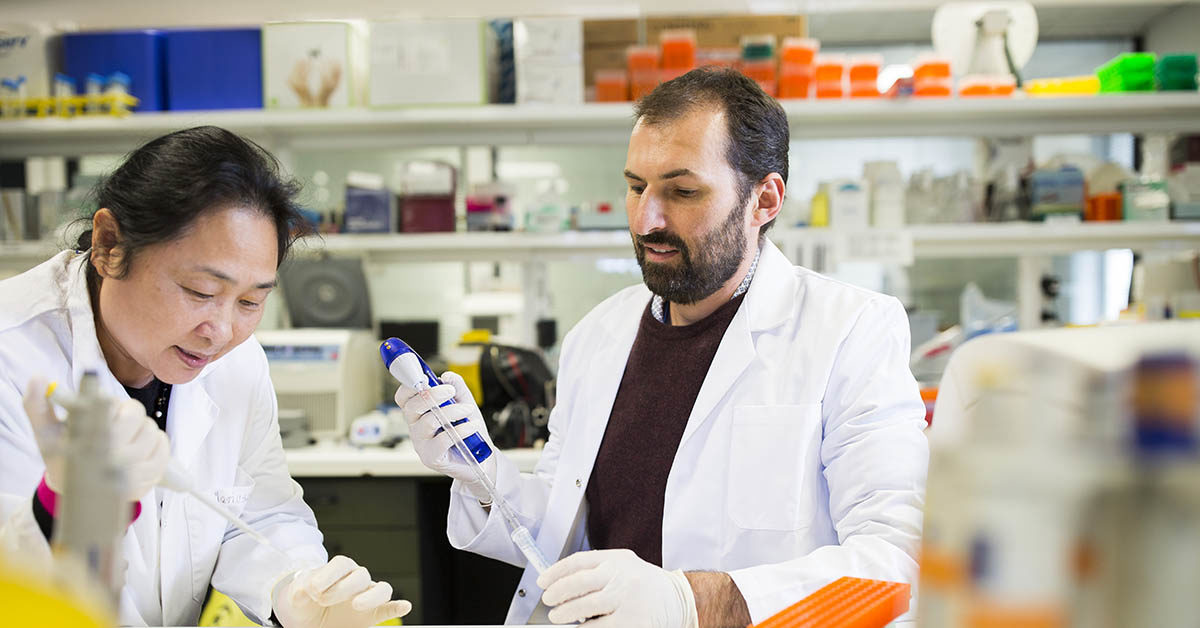This website uses cookies so that we can provide you with the best user experience possible. Cookie information is stored in your browser and performs functions such as recognising you when you return to our website and helping our team to understand which sections of the website you find most interesting and useful.
News
New genes predict glaucoma risk
Australian researchers have identified 107 genes that increase a person’s risk of developing glaucoma – leading to a genetic test that could be available within the next two years.
A ground-breaking study into the genetics of glaucoma has led to a test that can reveal your risk of developing the disease. And it has the potential to revolutionise the way we screen for it in future.
Glaucoma affects an estimated 300,000 Australians and is the leading cause of irreversible blindness worldwide. It’s also one of the most heritable human diseases: risk increases up to 10-fold if your parent or sibling has glaucoma.
Risk factors like age and family history have long been our best estimate of whether someone will develop the disease. But Australian researchers have now discovered a number of new genes that can more accurately predict individual glaucoma risk.
“For the first time show we’ve been able to clearly show that people with different genetic loads have different likelihoods of developing glaucoma,” says Professor Alex Hewitt, Head of Clinical Genetics at CERA and one of the lead researchers in the study.
The study was a collaboration involving CERA researchers and colleagues from the QIMR Berghofer Medical Research Institute, Flinders University and other centres around Australia.
The research, which culminated in an article published in the journal Nature Genetics in early 2020, focused on primary open angle glaucoma. This is the most common form of glaucoma in people of northern European descent. Interestingly, the researchers found that the test also worked well in people from South Asia. This means that a larger population than expected may benefit from the test.

“We’re hoping this could eventually be like bowel cancer screening,” says Professor Alex Hewitt.
Improving glaucoma screening
The research team is now working to get the genetic test into clinics within the next two years.
Armed with a genetic test, clinicians will be able categorise their patients as low, medium or high-risk of glaucoma and set a personalised screening plan.
As glaucoma often has no symptoms until there’s advanced vision loss, people at high-risk will be encouraged to undergo frequent eye checks. This increases the chance that glaucoma is detected and treated before permanent and irreversible vision loss occurs.
Eventually, a similar test could be used for population-wide screening of glaucoma.
“We’re hoping this could be like bowel cancer screening,” says Professor Hewitt.
“Imagine if a saliva DNA collection kit is sent to you when you turn 50. You mail it back and a few weeks later receive a report card that shows your risk of glaucoma and how often you need to get your eyes checked.
“It’s an exciting prospect.”
What is clinical genetics?
Clinical genetics is one of the key research areas at CERA. It’s a medical speciality that focuses on the clinical and genetic study of inherited eye diseases like glaucoma, retinitis pigmentosa and Leber’s Hereditary Optic Neuropathy (LHON).
At CERA, researchers first try to understand how defects in our genes – the basic unit of heredity – play a role in these diseases. Then they use this knowledge to come up with new treatments or to find better ways to screen people who could be at risk.
Get to know glaucoma
Download your free guide now.
This guide gives you the essential facts about this common eye condition, and snapshot of the latest research advances at CERA.

